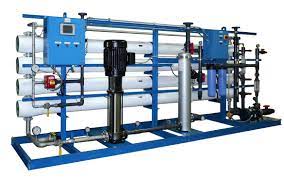How many steps does RO Water Purifier consists of?
My friends and clients often ask me: “How many stages are necessary in the RO Plant?”
This is an important question that is often asked, and as more and more 5+ stage systems come to market, it is important to understand what the different stages do and whether they are a good investment.
To get the most out of it, you need to quickly understand what a basic RO Water Purifier is and how it works.
The simplest reverse osmosis requires only 2 stages. The first stage, the carbon block, performs two tasks. It filters at a certain micron level (microns are a measurement of size, so when someone talks about filtering at a certain micron level.
they mean how small a particle has to be to pass through the filter) and it removes chemicals through a chemical reaction (chemicals in the water bind to the carbon block and stick there).
In a reverse osmosis system, this is called “pre-filtration” because it takes place before the reverse osmosis membrane.
The second stage, the reverse osmosis membrane itself, is a thin film of composite material that filters water at the molecular level, rejecting most contaminants in the water based on their size or electrical charge.
The holes or pores
In the layer are so small that water only passes through them under pressure; the higher the pressure, the faster the water passes through.
Because the tap water pressure is not so high, the rate of flow of clean water through the reverse osmosis membrane is quite slow and it takes several minutes to fill the glass. To overcome this, reverse osmosis systems (as shown in the figure above) are usually equipped with a tank.
This tank is under pressure and fills with RO over time. When drinking water is required, you press a small tap and the tank empties very quickly (a glass fills in 5-8 seconds).
Now the next steps. Because the filter water is store in a tank with an internal rubber seal, the water can acquire a taste, especially if left in the tank for a long time. Enter step 3 – “pre-filter”.
A second carbon filter is placing between the tap and the tank to remove the last taste from the water store in the tank.
It therefore involves three steps:
pre-filtration, reverse osmosis membrane and post-filtration. If you buy more, you will start buying “bells and whistles” that will cost you a lot of money every time you have to replace them.
Step 4: Carbon filter:
A sediment filter is often installing before the carbon filter. This sediment filter is shape like finely rolling cotton. The advantage of this method is that particles in the water are removing by the sediment filter before they reach the first carbon filter.
Carbon filters are more expensive to replace than sediment filters and are more prone to clogging. Sediment filters typically have a higher micron rating than carbon filters and protect carbon filters from clogging quickly, just as carbon filters protect reverse osmosis filters from clogging quickly.
Stage 5:
Some consider the aquarium to be one stage, while others begin an ever-growing list of additional filters that do more “amazing” things to the water, such as reintroducing many of the metals and other substances that the filter has removed.
In addition, more and more filters are add to the list, including pre-filters with anti-salinity measures to prevent scale formation in reverse osmosis membranes. Scale prevention is a very common technology in large industrial reverse osmosis plants.
We know this because our parent company has been building containerized reverse osmosis plants for large industrial plants for many years.
It makes no commercial sense to purchase these for small residential systems. The cost of using the salt control cartridges exceeds the savings from replacing the reverse osmosis membranes.
Also, these cartridges leach more chemicals into the water before the reverse osmosis membrane, all of which goes down the drain and back into the environment. So, they are no good for that, either.
Steps 6, 7, and 8:
The idea that Step 6 must be better than Step 5, etc., is really just a way to get consumers to buy more than they need. This is because reverse osmosis is a part of every system.
Another thing to emphasize is that maintaining an 8-step reverse osmosis system requires 8 different replacement cartridges, making a modest investment an unnecessary expense.
In summary:
Carbon filter + reverse osmosis will give you the best water. Anything else will provide little or no benefit in the long run and will end up costing more.
For home use as drinking water, we strongly recommend using a tank, as the flow rate from a reverse osmosis system is not practical at tap water pressure.
Since 1994, we have developed a wide range of the most cost-effective quality systems. Please see my own recommended 4-stage reverse osmosis system that I use myself.


